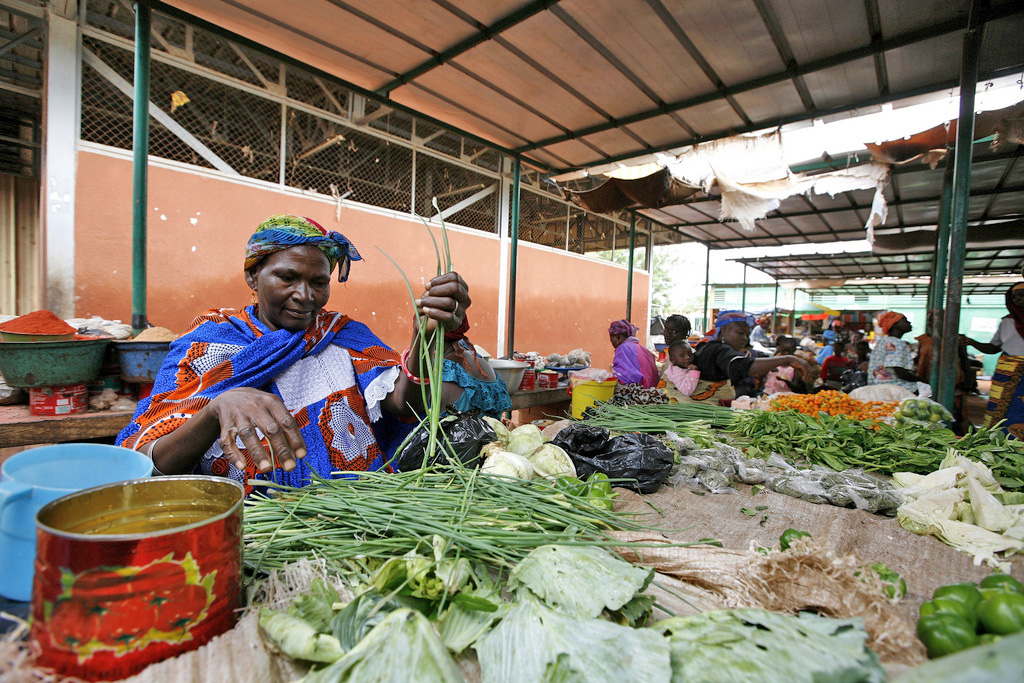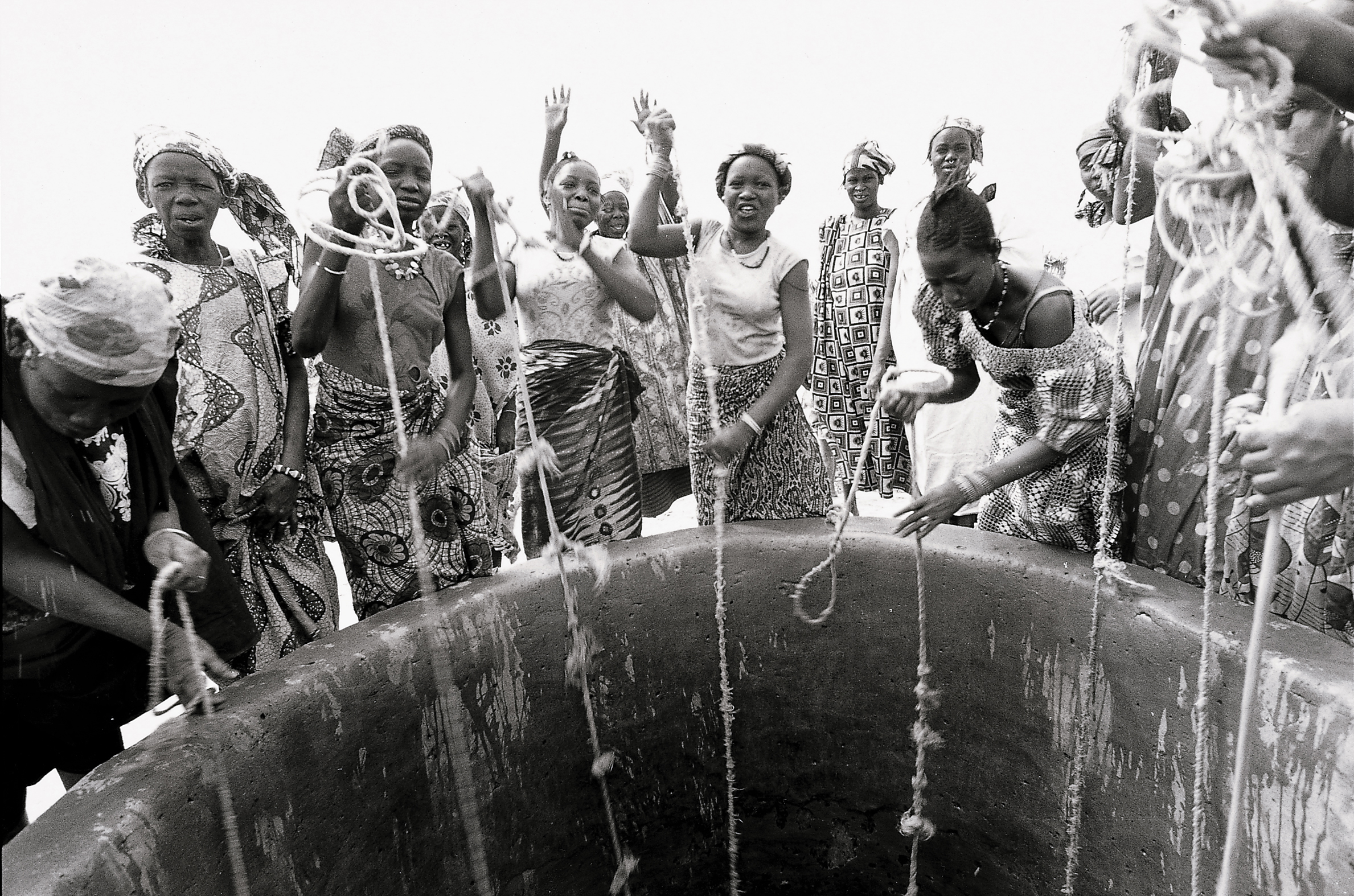Finding the right goals and motives for aid

What should development aid achieve? Is the goal changing from poverty reduction to stemming migration? The effectiveness and significance of the Swiss commitment is under the spotlight again.
Immigration from poor countries cannot be blocked through development cooperation. On the contrary, if the support is successful, emigration will grow along with increasing prosperity. This is the conclusion of a recently published study by the think tank Foreign Policy Forum (Foraus).
The study, entitled ‘Does economic development prevent migration?’ has sparked a debate about the questions of migration containment and poverty reduction. The effectiveness of development and cooperation work is being intensively discussed, not only in Switzerland but internationally. Being able to demonstrate success has become extremely important but this approach is problematic.
These issues were raised at the annual conference of Swiss development and cooperation work held by the Swiss Agency for Development and Cooperation (SDC) and the State Secretariat of Economic Affairs (Seco), which took place recently in Bern.
Containment rhetoric
“We first looked at empirical facts that show that emigration from poor countries rises along with increasing income per capita,” Paolo Padrutt told swissinfo.ch.
The development expert and former vice-president of Foraus said that the poorest countries had hardly any emigration.
“People can’t afford to pay thousands of dollars to people smugglers,” he noted. “We have observed that [Swiss] parliament is increasingly calling for migration containment to be produced by development and cooperation work.”
The study doesn’t question the value of development aid, rather it criticises the rhetoric of politicians and authorities, who designate aid money as a means of stemming migration.
“We fear that development work is too strongly concentrated on countries like Tunisia as soon as a large number of economic migrants come from there,” he commented.
‘Wrong countries’
Tunisia for example can by no means be counted as one of the world’s poorest countries. “So money is not coming to the aid of the countries and people who actually need it the most, but to the countries that are currently the most important for our immigration policy,” Padrutt argued.
Just 830 of the total 22,551 people who sought asylum in Switzerland last year came from the 10 poorest countries in the world. With the focus on migration control, development aid risks losing sight of its real goal – poverty reduction – according to the study.
Poverty reduction
“The study sparked brainstorming and that is good. But I do not agree with the key finding that development and cooperation work leads to more migration,” Martin Dahinden told swissinfo.ch. According to the director of the SDC, there are no international studies which prove that.
“The goal of Swiss development aid is poverty reduction. Better living conditions in the countries of the South have the effect of stemming migration.”
SDC does a lot in this area, “especially aid on the ground, for example around Syria, where we are occupied with refugees, displaced people, giving them some life perspectives.”
Global challenges
“We are also faced with other tasks, with global challenges”, which is why development work also plays a role in food security, climate change, water and resources issues, Dahinden explained. “The latter with the goal of improving the development chances of poor countries and population groups.”
Return assistance is also one of the global challenges, he said: “We have programmes and experience since the 1990s in the Balkans. We pursue migration partnerships, where we can get together with the countries concerned and look for solutions.”
Too many goals
For Padrutt development aid loses effectiveness by having too many goals. “The main task is not, as has been recently promoted, to tackle climate change or gender inequality. Poverty should be the focal point. We asked ourselves in Foraus how Switzerland could achieve more in the future with bilateral development and cooperation work,” he said.
One important question is the analysis by Swiss institutions of the receivers of aid. “It is not only about letting Swiss taxpayers know what is happening with the aid money. We find it even more important that the people on the ground have influence over what they receive. Of course nobody turns down a gift but we must get more feedback,” Padrutt said.
Foraus also questioned what constituted a coherent development policy. “Is it coherent that we support the [Swiss] farmers with SFr4 billion in grants and seal off our market with high agricultural tariffs? At the same time we expect the African countries to export their products to the world – only please not to us!”
Defining results differently
The way the effectiveness of development aid is evaluated has changed, according to Dahinden: “Before we were happy when we knew how many wells had been dug, how many schoolhouses built, and how many people were attending courses. That is not enough anymore. Attending a training course is not the goal, but that the people learn something there and can get an income from it to feed their families. That’s what’s being evaluated now.”
Critics complain that the current overriding attention given to the effectiveness of development aid is problematic, because agencies are only concentrating on projects whose effects are relatively easy to demonstrate, such as water or training projects. That leaves other projects out which are just as important for a country’s development.
A project’s content shouldn’t be shaped by the need to measure and evaluate, said Dahinden: “Water projects are clearly easier to measure. We can say 35,000 people a year have new access to drinking water. And we can say that in a peaceful poor country progress is easier to measure than in a conflict zone. But that is not a reason to withdraw from difficult countries.”
Migration is a consequence of poverty, economic need, armed conflict and negative environmental influences. At the same time it offers an opportunity to escape poverty.
With globalisation migration movements have intensified and become more complex. The Swiss Agency for Development and Cooperation (SDC) aims to use the positive aspects of migration and to minimise the negative consequences.
When migration is integrated into development strategies in a targeted and regulated way, it can be a driver for development.
It should also be ensured that migration takes place in recognition of the rights and interests of the affected people and countries, and that better use is made of the remittances and knowledge of the migrants for the development of their countries of origin and that the potential of the diaspora is better exploited.
Never before have so many people lived outside their countries of origin. In 2010 United Nations estimates put the figure at 200 million, 3% of the world population. The groups of people that mow migrate include qualified and unqualified workers, students and families. The legal status of the migrants also varies. They include refugees and internally displaced people, as well as regular and irregular migrants.
(Source: SDC)
(Translated from German by Clare O’Dea)

In compliance with the JTI standards
More: SWI swissinfo.ch certified by the Journalism Trust Initiative












You can find an overview of ongoing debates with our journalists here . Please join us!
If you want to start a conversation about a topic raised in this article or want to report factual errors, email us at english@swissinfo.ch.